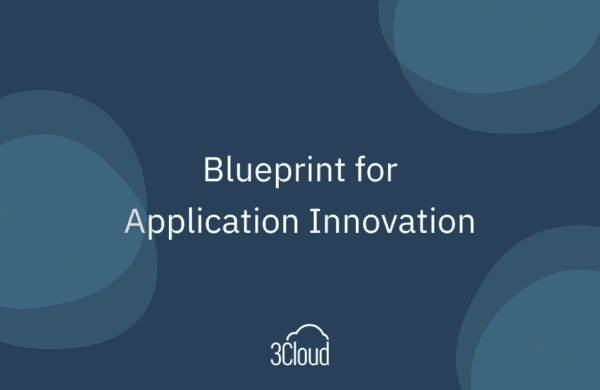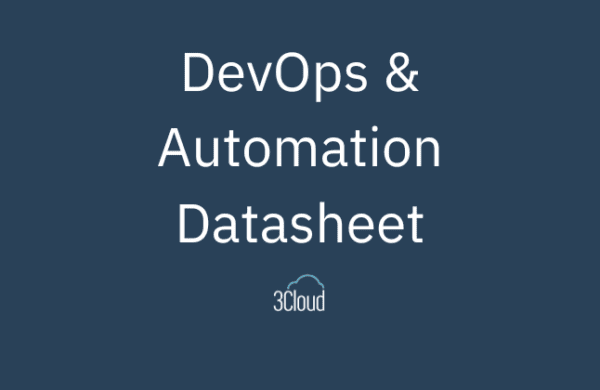There’s a strong chance that your organization’s goal has been to move to the cloud, contributing to either the $257.5 billion in public cloud spending for 2020 or expected growth of another 18% for 2021. Perhaps you’ve already done it. You’ve allocated resources, tasked teams with getting ready for the migration, and one fine day you were told, “it’s done.” Now, your IT department assures you that your infrastructure is “in the cloud.” Box checked, right? Maybe not.
If all you’ve done is move your virtual machines (VMs) from on-premises to a cloud provider, are you really “in the cloud”? Are you taking advantage of what the cloud provides? Read on as we unpack these questions for organizational and IT leaders and explore why failing to be fully in the cloud can mean missing out on its most transformative business outcomes.
Cloud Services, At A Glance
Understanding whether you’re fully leveraging the cloud starts with cloud service models. A lot of companies will pick their VMs up from their on-premise data center, drop them in the cloud, tinker with network settings, and call it a day. This lift-and-shift strategy, however, only takes advantage of your cloud provider’s infrastructure as a service (IaaS) offerings. While IaaS can be a reasonable first step, your internal team is still on the hook for managing a lot behind the scenes.
How Do I Choose?
Microsoft recommends choosing PaaS offerings whenever possible. First and foremost, your organization gets to stop worrying about:
- Patching operating systems
- Provisioning and sizing virtual machines
- Installing and maintaining middleware (such as Redis, IIS, Active Directory etc.)
- Setting up VNets
- Configuring infrastructure (load balancers, storage, etc.)
- Developing intricate disaster recovery plans
It should go without saying, but this is huge. You don’t have to question whether or not your servers are patched and secure. You gain back time that would be spent on operating system updates and setting up, testing, and maintaining the networking, storage, and software configuration for middleware. All this means your team can focus instead on delivering applications and, perhaps most importantly, innovating on services or products to maintain your competitive growth.
Why Doesn’t Everyone Skip IaaS?
You might be wondering why any organization would go the IaaS route. The answer is that it’s generally more complicated to move from VMs to PaaS offerings than it is to simply lift-and-shift your VMs and VNets to IaaS. This complexity manifests in the form of longer migration times, tougher knowledge ramp-up, and ultimately higher migration costs. These costs can be greatly amplified if you jump into a PaaS migration without deep knowledge of exactly how to move from, for example, a VM to an App Service.
That said, IaaS only gives you a fraction of what the cloud offers. To borrow an analogy from construction, going with IaaS is a lot like lifting your house and placing it on a new foundation. You may gain new electricity, plumbing, and gas lines, but the rest of the house and its issues remain the same. PaaS gives you the new foundation and basic utilities, plus you get to remodel the entire home to make it more modern and customized to your needs. In other words, when you take into account the long-term resource savings, protection from security holes, and opportunities to easily leverage the latest technological offerings, PaaS gives you so much more. Its benefits for your business include:
- Reduced costs in the form of lower maintenance, faster provisioning, and tight control over cloud resource utilization
- Improved efficiency through out-of-the-box availability of almost any feature an application needs
- Faster innovation by allowing developers to use advanced features in a sandbox when developing proof-of-concept designs
- Easier third-party integrations through API gateways, tons of built-in connectors, and easy access-and-control management
To summarize, only PaaS delivers a powerful combination by both freeing up your team to innovate and giving them access to scalable, cutting-edge technologies to get there. If you’re not going PaaS, you’re only scratching the cloud’s wispy surface.
How Do I Get There?
The good news is that if you’ve already taken the plunge to IaaS, you’re well positioned to make the move to PaaS and broader organizational enablement. If you’re still planning your cloud migration, you can confidently skip IaaS and go directly to PaaS. Microsoft Azure offers some great guidance on getting started through their Azure Migration Program (AMP), which we’ll dive into in an upcoming post.
Running through AMP with an experienced partner makes the process smoother and faster, and it sets you up for success when you begin. Polaris has done these migrations dozens of times, and we’ve seen it all when it comes to interesting and challenging applications that need to be migrated to the cloud. However you get there, prioritizing a true cloud migration can help put you in good company with the top-performing enterprises coming out of COVID-19 and ushering in a new era of digital innovation.




